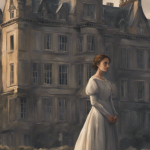
What is Feminism
Feminism is a social and political movement that advocates for the equal rights, opportunities, and treatment of women, as well as challenging and combating gender-based discrimination and sexism in society. It seeks to ensure that women have access to the same opportunities as men in areas such as education, employment, politics, and healthcare. Feminism also aims to challenge and dismantle societal norms, expectations, and stereotypes that perpetuate gender inequality and restrict women’s lives. It recognizes that gender inequality intersects with other forms of discrimination, such as racism, classism, and ableism, and seeks to address these intersecting oppressions in order to create a more inclusive and just society.
What Can We Get From Feminism?
Feminism is a social and political movement that advocates for equal rights and opportunities for all genders. Here are some things we can get from feminism:
1. Gender Equality: Feminism strives to challenge and dismantle the systems of power and discrimination that perpetuate gender inequality. By promoting the idea that all genders should have equal rights, opportunities, and choices, feminism aims to create a more just and inclusive society.
2. Women’s Rights: Feminism has been instrumental in securing and advancing women’s rights in various areas such as education, employment, reproductive health, and legal protection. It advocates for equal pay, protection against gender-based violence, and access to opportunities traditionally denied to women.
3. Empowerment: Feminism encourages women and non-binary individuals to embrace their strengths, abilities, and worth. It promotes self-confidence, autonomy, and the pursuit of personal and professional goals. Feminism challenges societal expectations and stereotypes, allowing people to define their own identities and express themselves authentically.
4. Intersectionality: Feminism recognizes that gender inequality intersects with other forms of discrimination such as race, class, sexuality, and disability. It seeks to address these interconnected issues and promote inclusivity and solidarity among diverse groups of women, acknowledging that their experiences and challenges may differ.
5. Social Change: Feminism has played a crucial role in numerous transformative social movements, including reproductive rights, LGBTQ+ rights, civil rights, environmental justice, and more. By fighting against oppressive systems, feminism contributes to a more just and equitable society for all.
6. Increased Awareness: Feminism encourages critical thinking, raising awareness about the ways gender roles, stereotypes, and biases affect individuals and society. It challenges harmful beliefs and practices, promoting empathy, understanding, and respect for diverse perspectives.
7. Male Involvement: Feminism acknowledges that achieving gender equality requires the involvement and support of all genders. Inviting men to be allies and advocates for feminism promotes a more inclusive movement and helps break down traditional gender roles and expectations.
It is important to note that people’s understanding and experiences of feminism can vary. This answer provides a general overview of some common goals and outcomes associated with the feminist movement.
Strategies in Learning Feminism
1. Read and educate yourself: Start by reading books, articles, and academic papers on feminism to gain a solid understanding of its history, theories, and key concepts. Look for both classic texts and contemporary works to explore diverse perspectives.
2. Engage in discussions: Join feminist discussion groups, online forums, or attend feminist events and conferences to engage in conversations with like-minded individuals. This will broaden your understanding of feminism and expose you to different viewpoints.
3. Intersectionality: Recognize that feminism intersects with various forms of oppression and discrimination such as racism, classism, ableism, and LGBTQ+ rights. Understand how different forms of discrimination intersect with gender and how they contribute to inequality.
4. Challenge your biases: Reflect on your own beliefs, attitudes, and biases towards gender roles, stereotypes, and inequality. Be open to unlearning and reevaluating your perspectives to create space for growth and understanding.
5. Support feminist causes and organizations: Look for local or national feminist organizations working towards gender equality and support their initiatives through donations, volunteering, or participating in their campaigns. This helps you become an active ally and contribute to the movement.
6. Amplify marginalized voices: Seek out and listen to the experiences and perspectives of marginalized individuals, including women of color, LGBTQ+ individuals, disabled women, and others facing multiple layers of discrimination. Amplify their voices by sharing their work, advocating for their rights, and supporting their initiatives.
7. Reflect and self-critique: Regularly evaluate your own actions, language, and behaviors to ensure that you are actively working towards dismantling patriarchal norms and promoting gender equality. Acknowledge and learn from your mistakes and strive to grow as an ally.
8. Use media critically: Analyze media, including movies, TV shows, and advertisements, from a feminist lens. Examine how they portray gender, challenge stereotypes, or perpetuate inequality. Seek out feminist media that accurately represents diverse experiences.
9. Stay updated: Keep up with current feminist news, events, and emerging issues through reliable feminist publications, websites, podcasts, and social media accounts. This will keep you informed about ongoing discussions and debates within the movement.
10. Take action: Once you have a good foundational understanding of feminism, put your knowledge into action. Advocate for gender equality in your personal and professional life, challenge sexist behavior, and support policies that promote inclusivity and equal rights.

Jane Eyre by Charlotte Bronte
Summary
Jane Eyre by Charlotte Bronte is a classic novel that follows the journey of its eponymous protagonist from a deprived and orphaned childhood to her growth into an independent and determined woman. Jane is raised in the household of her cruel Aunt Reed, who despises her, and is sent to Lowood Institution, a charity school where she endures harsh conditions and the death of her best friend. After finishing her education, Jane is employed as a governess at Thornfield Hall by the enigmatic and brooding Mr. Rochester.
As Jane falls in love with Rochester, a secret from his past threatens their relationship. On the day of their wedding, it is revealed that Rochester is already married to an insane woman, Bertha Mason, who is locked away in the attic. Heartbroken and determined to stay true to her values and principles, Jane leaves Thornfield Hall and embarks on a difficult journey.
She finds refuge in the home of a kind clergyman, St. John Rivers, and his sisters. Jane discovers that they are her long-lost cousins and later inherits a fortune from her deceased uncle. Apprehensive about her newfound wealth, Jane returns to Thornfield Hall to find it in ruins due to Bertha’s actions. She learns that Rochester had been grievously injured and blinded during the destructive incident.
Reunited with Rochester, Jane chooses to marry him and they live happily together, with Rochester regaining some of his eyesight. The novel highlights themes of love, independence, morality, and social class, while exploring the struggles and triumphs of its strong-willed, principled heroine. Through her determination and ability to challenge societal norms, Jane Eyre establishes herself as a beloved and enduring character in literary history.
Reasons for Recommendation
1. Strong female lead: Jane Eyre is a powerful protagonist who defies societal expectations for women. She is independent, intelligent, and refuses to be defined solely by her gender. This portrayal challenges traditional gender roles and encourages women to assert their own identity and agency.
2. Feminist themes: The novel tackles important feminist themes such as inequality, oppression, and the fight for women’s rights. Jane experiences mistreatment and discrimination throughout her life, which highlights the need for women’s liberation and social change.
3. Critique of patriarchy: Jane Eyre confronts the patriarchal structures of society. It questions the power dynamics within marriage and emphasizes the importance of female autonomy and equality within relationships. This deconstruction of male dominance promotes feminist ideals of equality and female empowerment.
4. Representation of female desire: The novel challenges the societal expectations placed on women’s desires. Jane refuses to settle for a loveless marriage or subjugate her desires to fit within societal norms. This representation encourages women to pursue their own desires and prioritize their happiness.
5. Feminist critique of beauty standards: Jane Eyre presents an alternative to the typical Victorian standard of beauty. Jane is described as plain and unremarkable, yet she is still depicted as desirable and worthy of love and respect. This challenges the notion that a woman’s worth is solely based on her physical appearance and promotes the idea that inner beauty and character are more important.
6. Female solidarity: The novel showcases the importance of female relationships and support networks. Jane forms strong bonds with other women, such as her friend Helen Burns and her cousin Diana Rivers. These relationships demonstrate the power of female solidarity and the importance of women supporting and empowering each other.
7. Subversion of gender norms: Through characters like Bertha Mason, the madwoman in the attic, Bronte challenges the idea that women should conform to societal expectations of femininity. By subverting these norms, the novel encourages readers to question and challenge gender roles imposed by society.
Overall, Jane Eyre provides a strong and empowering feminist narrative that challenges traditional gender norms and focuses on female agency, equality, and the fight against patriarchal structures.

Pride and Prejudice by Jane Austen
Summary
Pride and Prejudice, written by Jane Austen and published in 1813, is a classic novel set in early 19th-century England. The story revolves around the Bennet family, particularly the five Bennet sisters, whose mother is desperate to find them good husbands due to the lack of male heirs to the family estate.
The protagonist, Elizabeth Bennet, is an intelligent and independent-minded young woman with a strong sense of character. Her initial prejudice against Mr. Darcy, a rich and seemingly arrogant gentleman, causes her to misjudge him, while his pride initially prevents him from fully expressing his affection for Elizabeth.
Throughout the novel, Austen skillfully portrays the complexities of social expectations and gender dynamics of the time, as well as the themes of love, marriage, wealth, and class. The narrative explores the various romantic relationships that develop among the characters, including the tumultuous courtship between Elizabeth and Mr. Darcy.
As the story progresses, Elizabeth’s initial prejudice softens as she learns more about Mr. Darcy’s true nature and he becomes aware of his own mistakes. The novel also delves into the lives and marriages of Elizabeth’s sisters, showcasing different forms of love and varied approaches to matrimony.
Through witty dialogue, vivid descriptions, and intricate character development, Austen masterfully captures the social customs and nuances of her era while delving into deeper themes of societal expectations, self-awareness, and personal growth. Ultimately, Pride and Prejudice is a tale of love, self-discovery, and the power of overcoming one’s own biases.
Reasons for Recommendation
1. Strong Female Characters: Pride and Prejudice showcases a number of empowered female characters, such as Elizabeth Bennet and her sisters, who challenge the societal norms and expectations placed upon them. They prioritize their own agency and choices, highlighting the importance of independence and self-reliance for women.
2. Critique of Gender Roles: Austen’s novel subtly critiques the restrictive gender roles imposed on women in the 19th century. Through the characters’ experiences, she raises important questions about the inequalities and limitations women faced in terms of education, marriage, and social standing, shedding light on the need for gender equality.
3. Marriage as an Economic Transaction: Pride and Prejudice explores the theme of marriage as an economic transaction, exposing the financial dependence of women on men during that period. Austen challenges this notion by emphasizing the importance of love, respect, and compatibility in a marriage, encouraging readers to question and defy societal expectations.
4. Defying the “Perfect Woman” Stereotype: By presenting Elizabeth Bennet as a vibrant, intelligent, and outspoken protagonist, Austen challenges the notion of the “perfect woman” who should be modest, submissive, and eager to please. Elizabeth’s refusal to conform to societal expectations dismantles such stereotypes, promoting the idea that women should be free to express their true selves without compromising their individuality.
5. Subtle Satire on Gender Inequality: Austen’s witty and satirical writing style allows her to criticize the inequalities faced by women in a lighthearted manner. The novel satirizes the social norms of the time, exposing the contradictions and hypocrisies associated with gender roles, thereby encouraging readers to reflect on and challenge such inequities.
6. Female Empowerment and Sisterhood: The female relationships in Pride and Prejudice, particularly the bond between the Bennet sisters, emphasize the power and support that women can provide each other. The novel showcases the importance of sisterhood as a source of strength and resilience, promoting solidarity among women in challenging patriarchal norms.
7. The Power of Intelligence and Wit: Pride and Prejudice explores the power of intelligence and wit in challenging societal norms. Elizabeth’s sharp mind and quick wit enable her to navigate through the complexities of societal expectations, giving her agency and control over her own life. The novel showcases the importance of intellectual prowess and encourages women to embrace their intelligence rather than suppress it.
8. Moving Beyond External Appearances: Another feminist perspective in Pride and Prejudice is the idea of looking beyond external appearances. Austen challenges the shallow judgment of women based on physical beauty and highlights the significance of character, intelligence, and moral values. This theme encourages readers to value substance over superficiality.
In conclusion, Pride and Prejudice is recommended from a feminist perspective due to its strong female characters, critique of gender roles, exploration of societal expectations of women, and the emphasis on female empowerment, intelligence, and sisterhood. It offers valuable insights into the challenges faced by women in the 19th century and continues to resonate with modern readers in advocating for gender equality.
Frida – A Biography of Frida Kahlo by Hayden Herrera
Summary
Frida: A Biography of Frida Kahlo” by Hayden Herrera is a comprehensive exploration of the life and artistic achievements of the renowned Mexican artist, Frida Kahlo.
The biography delves into Kahlo’s tumultuous personal and physical journey, documenting her struggles with chronic illness, physical disabilities, and emotional turmoil. Herrera meticulously traces Kahlo’s upbringing in Mexico City, her relationship with her German father and Mexican mother, and the impact of her early experiences on her art.
The book delves into Kahlo’s complicated love life, including her passionate and often tumultuous marriage to fellow artist Diego Rivera. Herrera explores the artistic and romantic inspirations and conflicts between the two, highlighting their mutual admiration and creative influence on each other.
In addition to exploring Kahlo’s personal life, Herrera offers a comprehensive analysis of her artistic style, examining her unique blend of Surrealism, folk art, and personal symbolism. The biography provides insight into the profound impact that Kahlo’s cultural heritage, political experiences, and physical challenges had on her artistic expression.
Herrera provides readers with a vivid portrayal of Kahlo’s involvement in the Mexican Communist Party and her unwavering commitment to social justice causes. She explores Kahlo’s unwavering determination to challenge societal norms surrounding gender and identity, as well as her engagement with the feminist movement.
Overall, “Frida: A Biography of Frida Kahlo” offers readers a deep understanding of the complex and inspiring life of an iconic artist. It portrays Kahlo’s resilience, creativity, and determination to express herself authentically despite the numerous obstacles she faced.
Reasons for Recommendation
1. Exploration of Feminist Identity: The biography delves deep into Frida Kahlo’s life, offering an in-depth exploration of how she navigated and challenged societal expectations of women during her time. By emphasizing Kahlo’s fierce determination to break away from societal norms, the book showcases her strong feminist identity.
2. Subversion of Traditional Gender Roles: Frida Kahlo’s art and life were marked by a bold rejection of traditional gender roles. The biography sheds light on how Kahlo continually resisted and transcended the limitations placed upon women during the early 20th century, making her an empowering figure for feminists seeking to challenge gender stereotypes.
3. Depiction of Kahlo’s Pain and Resilience: The book does not shy away from exploring the physical and emotional pain that Kahlo endured throughout her life. By delving into her struggles with physical disabilities, miscarriages, and tumultuous relationships, the biography highlights how Kahlo transformed her pain into art and activism. This portrayal resonates with feminist beliefs that highlight the strength and resilience of women in the face of adversity.
4. Examination of Kahlo’s Artistic Agency: The biography provides readers with an intimate look into the creative process of Frida Kahlo. It examines how her art served as a means of self-expression, political commentary, and as a platform to challenge societal norms. By analyzing Kahlo’s agency as a female artist in a predominantly male-dominated art world, the book celebrates her as a feminist trailblazer.
5. Representation of Sorority and Solidarity: Hayden Herrera’s biography highlights the significant relationships Frida Kahlo had with other feminist figures of her time, such as the artist Georgia O’Keeffe and the writer Annette Messager. These friendships and alliances demonstrate Kahlo’s commitment to fostering sisterhood and solidarity among women, a central tenet of feminist philosophy.
6. Examination of Intersectional Feminism: The book recognizes that Frida Kahlo’s feminism was inherently intersectional, as she not only dealt with gender inequalities but also grappled with her identity as a Latina woman. The biography analyzes how Kahlo’s experiences as a Mexican woman influenced her artwork and the challenges she faced in both Mexican and Western society, providing a nuanced perspective on intersectionality within feminism.
7. Celebration of Female Empowerment and Agency: Overall, “Frida – A Biography of Frida Kahlo” celebrates the power of female agency and the ability of women to shape their own lives and destinies. By chronicling Kahlo’s personal and artistic journey, the book sends a powerful message of empowerment to readers, particularly to feminists seeking inspiration from female role models.